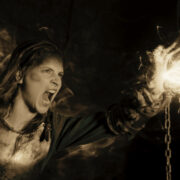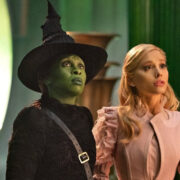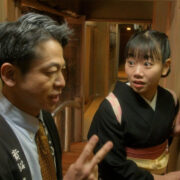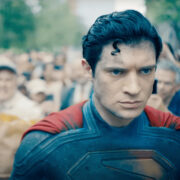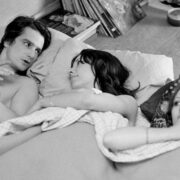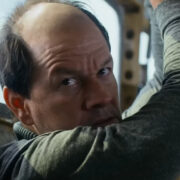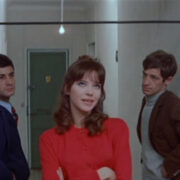THE MANY SAINTS OF NEWARK: An Underwhelming Appendage to TV’s Greatest Series
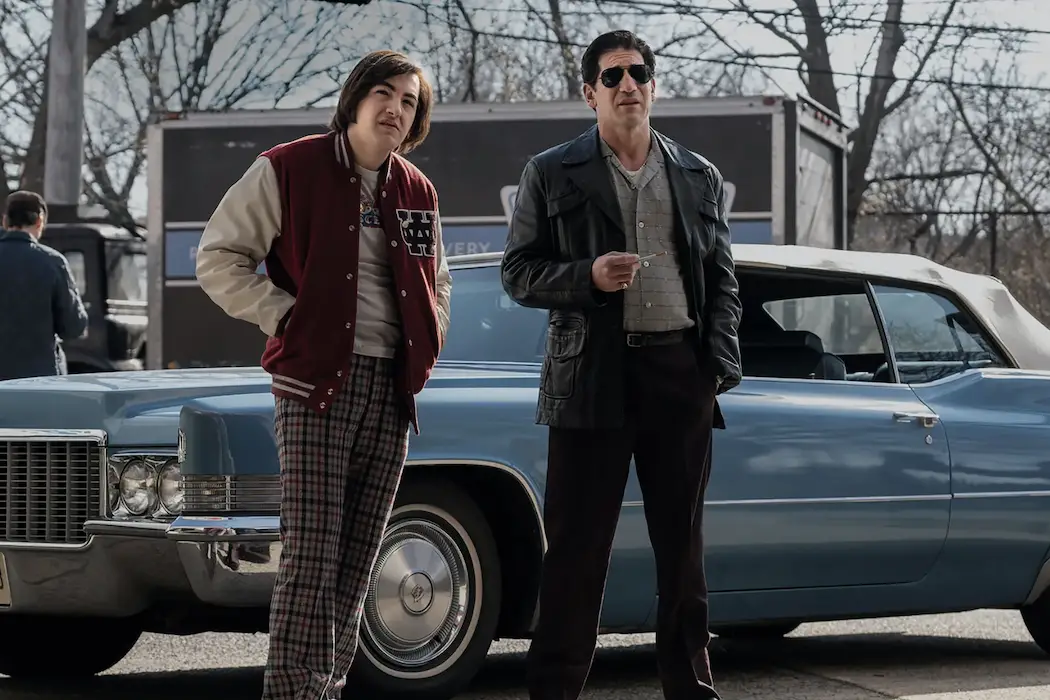
There seems to be a sense of irony at the heart of the Sopranos experience. David Chase, the show’s lovably grumpy creator, initially conceived the series as a feature film but could only get it made on television. Despite the show’s status as one of, if not the greatest series ever aired on television, Chase has always seemed to feel he “sold out,” as if a film would somehow be more impressive, grander, more everlasting.
And so, now we reach The Many Saints of Newark, a prequel movie to The Sopranos that, due to a global pandemic, is being released on a streaming service to watch in your home as an alternative to going to the theater. Life’s funny that way. But, as I watched Many Saints stretched out on my living room couch (sorry, David) it became impossible not to imagine how much richer the experience would be as a season of television; another stroke of irony.
To that point, it’s hard to imagine The Sopranos having the kind of impact and legacy it’s had if it had wound up as a feature. Despite ending its run almost 15 years ago, the show has prevailed and, in recent years, been meme-ified to point of feeling as though it never left. I, admittedly, came to the show late, not out of stubbornness or refusal to engage in its initial run but because I was simply was too young, yet oddly had an awareness, though parents’ friends and the culture at large that it was a phenomenon.
Coming to the series in college, it was both easily identifiable as a genesis for the prestige TV era to follow, while also slightly old-school in the way it operated as television. Much of today’s “prestige” shows are often constructed with an end-point. “It’s a 10-hour movie,” — How many times have you heard that? But The Sopranos was more elastic than that. There may be plotlines that carried over season to season, characters who would return, but, until its elongated final season, the show never felt like it was driving toward a particular conclusion. Once it got to that point, it bucked back, as if to say an end-point never mattered, that was never the show.
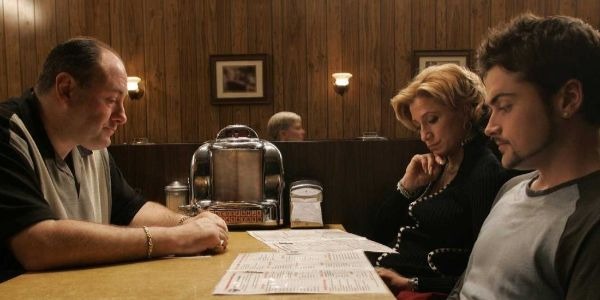
Revisiting episodes before Saints’ release, it’s still easy to see what made the show so explosive and exciting upon its release, especially when compared to what else was on TV in the late 90s and 2000s. There’s a freedom and sense of discovery in the show’s energy. The Sopranos was actively pushing the limits of what was possible on television, venturing into uncharted waters for what an hour-long drama could look like without ad breaks, how provocative could its content be, how complicated and contradictory could its characters be, and how cerebral and psychological was the drama.
A Change of Perspective
It’s disappointing then that the show’s movie counterpart doesn’t ever rise to those same heights, feeling instead boxed in without room to explore the same enriching digressions. Saints primarily winds its clock back to the 60s and 70s, focusing less on a young Tony Soprano (though we’ll get to that) than spending time with one of the series’ most mysterious figures: Tony’s uncle, Dickie Moltisanti.
Dickie was never actually seen on the show, having been killed decades prior, but was oft-spoken as a mythic figure by Tony and Dickie’s son, Christopher Moltisanti. That blankness and aura of myth gives Chase and co-writer Lawrence Konner the space to build out another complicated gangster figure, albeit one infinitely more stylish with his tailored rat-pack suits and shiny Cadillac than Tony ever was.
But despite being played with real magnetism and charm by Alessandro Nivola, Dickie never feels as three-dimensional and complex as Tony did on the show. I have to wonder whether more time on a series would have allowed more chances to explore the character’s psyche and self-denial. Chase and Konner clearly built a character who sees himself as a doer of good deeds, or at least someone who envisions himself that way to make up for his sins, a theme perhaps better explored in Martin Scorsese’s Mean Streets from 1973.
Dickie attempts to be a leader for his family, reconnect with a disgraced uncle, provide for his mistress (that’s a good deed, right?), and mentor young Tony but the capacity for violence always lurks under the surface. “Maybe some of the things you choose to do, aren’t God’s favorite,” Dickie’s uncle dryly professes, referencing the song “My Favorite Things.”
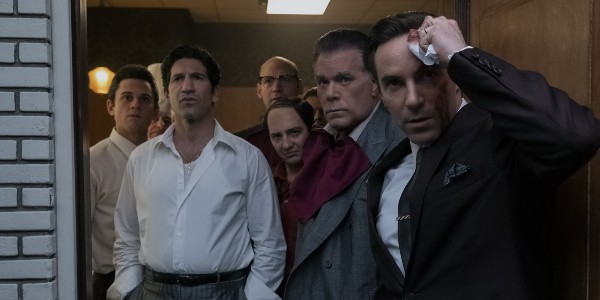
Part of the frustration with Many Saints is never giving Dickie’s moral crises room to stew. The film is crammed with enough potentially rich side plots to make for a compelling mini-series but in a 2-hour film merely feels rushed. The most glaring of these is a side narrative featuring Hamilton star Leslie Odom Jr. as a small-time crook who decides to build his own criminal empire outside the control of Newark’s Italian mob. Arguably the one fault one could throw at The Sopranos was how underdeveloped many of the Black characters were when they periodically were introduced. Here, the character Odom Jr. plays feels rich enough to open up another side to the Jersey criminal underworld but as the movie enters its second half, that thread begins to feel lost. There’s an allegory to be had in this section about Black ownership outside white control but it winds up feeling undercooked. Even the incorporation of the 1967 Newark riots feels like a potentially explosive topic that the movie has no real follow-up for.
Old Friends, New Faces
While Nivola, Odom Jr., and a wryly funny Ray Liotta (less said about who he’s playing the better) represent new characters to the Sopranos universe, Chase also indulges fans in younger versions of the show’s most iconic characters. The challenge comes in how easily we’re able to buy new cast members in these particular roles, and the results are decidedly mixed. Vera Farmiga and Corey Stoll arguably fair the best, playing middle-aged versions of Livia and Junior Soprano. They’re both able to capture just enough of the previous performances while not yet showing the full evolution into the characters as we knew them on the show.
Meanwhile, Billy Magnussen as the young Paulie Walnuts and John Magaro as the young Silvio Dante wind up feeling like the Muppet Babies equivalent of their characters. Though to their credit, Paulie and Silvio were always the most cartoonish characters on the show, and to recreate them with a level of naturalism that didn’t feel like an SNL impersonation would be next to impossible.
Then there’s the elephant in room: young Michael Gandolfini, stepping into the role that his late father made so iconic: Tony Soprano. It’s another thread that made me wish Many Saints had been stretched out as a series, allowing the audience to view the gradual transformation of a mischievous, though still wide-eyed, kid into the murderous sociopath from the show. While much of Many Saints feels cut from the cloth of much better mob movies, Gandolfini’s scenes are where the movie stumbles onto a spark of magic.
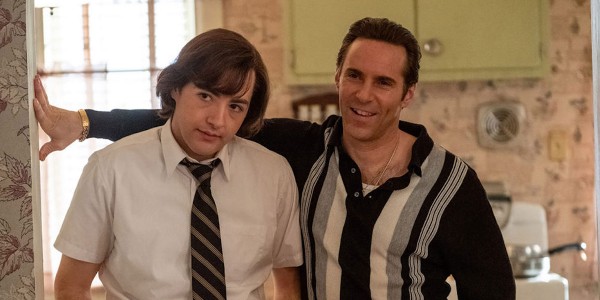
It’s not just that the young actor looks so much like his father physically, he also perfectly captures the body language and mannerisms of Tony Soprano in a way that can feel as though you are watching a ghost. The most mesmerizing of these moments comes in a scene where young Tony is sent to the principal’s office, a scenario that begins to feel reminiscent of the many therapy scenes throughout the series’ run, as Michael Gandolfini shifts his weight while slouching in the chair in nearly an identical manner to the way his father did.
Conclusion: The Many Saints Of Newark
In the end, Many Saints feels like a movie that only comes alive in small brief moments, such as a shot of Michael Gandolfini looking eerily like his father as the show’s theme of “Woke Up This Morning” begins to roll in. But for all the movie’s attempts to create an equally complex counter to Tony Soprano in Dickie, its lofty aspirations to broaden the scope of the show to Newark’s Black residents, and to create a domino of events that will eventually lead to young Tony breaking bad, the whole thing feels thin. The movie’s ultimate ending, the point at which all those aspirations come together, winds up feeling underwhelming: a shrug rather than an earth-shattering turning of the page for the characters at its center.
What did you think of The Many Saints of Newark? What are your favorite episodes of The Sopranos?
The Many Saints of Newark was released in theaters and streaming on HBO Max on October 1, 2021.
Watch The Many Saints of Newark
Does content like this matter to you?
Become a Member and support film journalism. Unlock access to all of Film Inquiry`s great articles. Join a community of like-minded readers who are passionate about cinema - get access to our private members Network, give back to independent filmmakers, and more.

